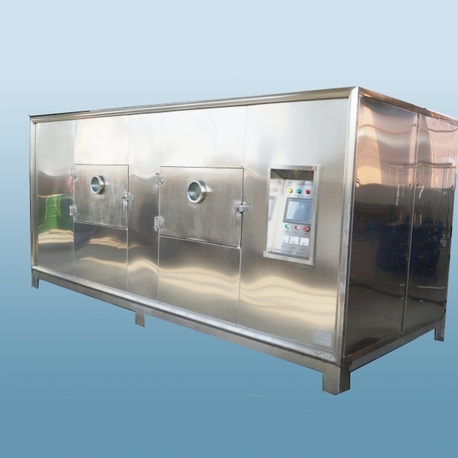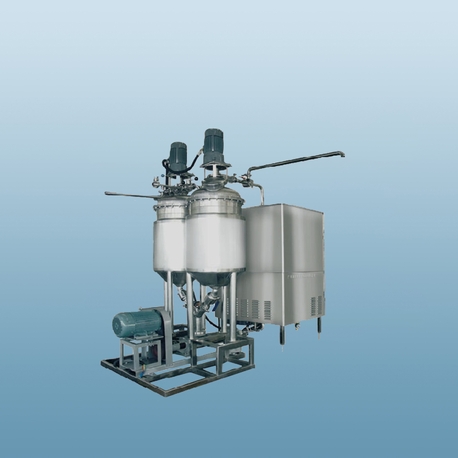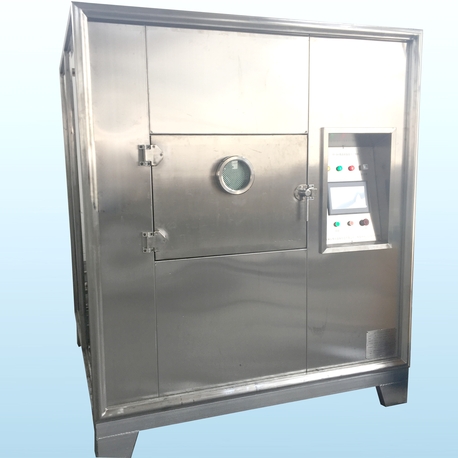For centuries, preserving the delicate beauty of flowers has been a race against time. Traditional methods like air drying or silica sand are slow, inconsistent, and often lead to faded colors and brittle textures. In the commercial floral industry, where quality and speed are revenue drivers, these methods simply don't scale. Enter a game-changing technology: the industrial microwave flower dryer. This isn't a kitchen appliance; it's a sophisticated piece of commercial equipment that uses controlled microwave energy to dry flowers rapidly while preserving their vibrant, natural appearance. Companies like Nasan are at the forefront of integrating this advanced technology into robust, industrial-scale drying solutions. This article explores the five key reasons why this technology is transforming how businesses dry flowers for retail, crafts, and permanent botanicals.
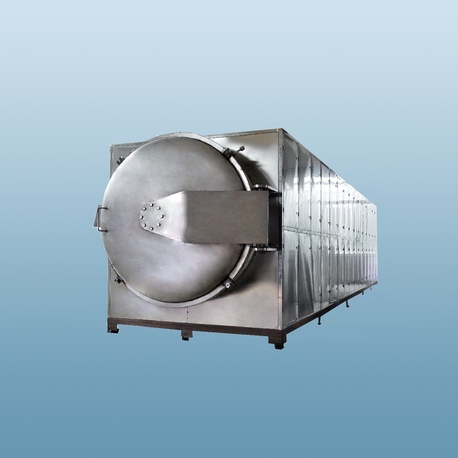
1. Unmatched Speed and Throughput
The single most significant advantage of a commercial microwave flower dryer is its sheer speed. Traditional air drying can take weeks, and even desiccant methods require several days. This creates a major bottleneck for businesses that need to process large volumes of fresh blooms, such as those supplying dried floral arrangements, potpourri, or wedding decor.
An industrial microwave flower dryer uses microwave energy to directly excite water molecules within the plant tissue. This internal heating drives moisture out from the inside in a matter of hours, not weeks. For a commercial operation, this means:
Faster Turnover: Receive, process, and ship orders in days instead of weeks.
Increased Capacity: The same physical space can handle significantly more volume over time.
Reduced Lead Times: Accept urgent, large-scale orders with confidence.
2. Superior Color and Structural Integrity
Ask any traditional flower dryer about their biggest challenge, and they'll likely say "color loss." The prolonged exposure to air and slow dehydration process causes pigments to break down, resulting in dull, brownish hues.
A microwave vacuum dryer—a common industrial configuration for this application—operates in a low-pressure chamber. This lowers the boiling point of water, allowing the microwave flower dryer to use lower temperatures. The combination of rapid drying and low heat is the key to preservation. It effectively "locks in" the anthocyanins and other pigments, preserving the flower's original vibrancy with stunning fidelity. Furthermore, because the plant cell walls don't collapse over a long period, the flowers retain more of their original shape and a supple, less brittle texture.
How It Works: The Science Behind Microwave Drying
Understanding the process demystifies why this technology is so effective. A commercial microwave flower dryer is a controlled system, not a simple box.
Loading: Flowers are carefully arranged on trays to ensure even exposure. Uniformity is critical.
The Drying Cycle: The chamber door seals, and the system creates a vacuum. Controlled microwave energy is then applied in precise pulses. This intermittent heating prevents overheating and allows internal moisture to migrate to the surface.
Moisture Removal: The vacuum system actively pulls the evaporated moisture out of the chamber. This continuous dehumidification is vital for efficient drying.
Cooling and Unloading: Once the target moisture level is reached, the system cycles off, and the flowers are cooled in the controlled environment before the chamber is opened. This prevents thermal shock and reabsorption of ambient moisture.
3. Operational Efficiency and Cost-Effectiveness
While the initial investment in an industrial microwave flower dryer is higher than a set of drying racks, the long-term operational economics are compelling.
Energy Efficiency: Microwave energy heats the product directly, not the entire chamber or surrounding air. This targeted approach translates to lower energy consumption per batch compared to large, constantly heated conventional drying ovens.
Labor Savings: The process is highly automated. Once the cycle parameters are set for a specific flower type, the machine requires minimal supervision, freeing up staff for other value-added tasks like arranging and packaging.
Reduced Waste: The dramatic improvement in quality and consistency means far fewer batches are lost to mold, browning, or physical damage. This directly improves your bottom line.
4. Unprecedented Consistency and Quality Control
In a commercial setting, every product that leaves your facility must meet a specific standard. Traditional methods are fraught with variables—humidity, ambient temperature, air circulation—that make consistent results nearly impossible.
A microwave vacuum dryer eliminates these variables. It is a fully enclosed, programmable system. For a given type of rose, for example, you can create a recipe: a specific vacuum level, microwave power setting, and cycle time. Every time you run that recipe, you will get nearly identical results. This level of industrial flower drying control is a dream for quality assurance managers and allows brands to build a reputation for reliable, high-quality preserved florals.
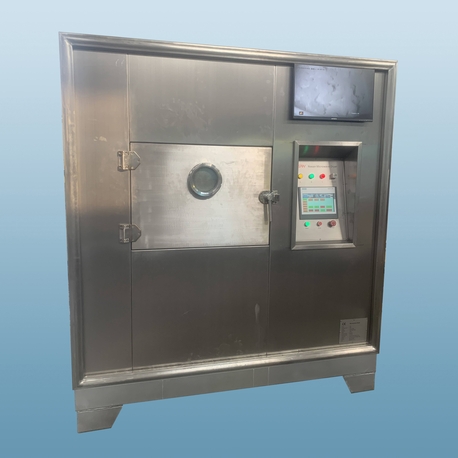
5. Enabling New Product Possibilities
This technology doesn't just improve existing processes; it unlocks new business opportunities. The ability to dry flowers rapidly and perfectly opens doors to products that were previously too difficult or risky to produce commercially.
Complex Blooms: Delicate flowers like lilies, peonies, and delphiniums, which are notoriously difficult to dry well, can now be preserved successfully.
Herbs and Botanicals: Expand into the culinary or medicinal herb market by drying products with superior color and potency.
Custom Color Preservation: Work with floral growers to preserve new and unique flower varieties that were previously unsellable in the dried market.
Is a Microwave Flower Dryer Right for Your Business?
The decision to integrate this technology depends on your scale and quality requirements. For small artisanal creators, it may be overkill. But for any business looking to scale up its production of high-value preserved florals, an industrial microwave flower dryer is no longer a luxury—it's a strategic investment. When evaluating suppliers, look for experience and technical support. Brands like Nasan offer not just equipment but comprehensive solutions, helping you integrate this technology seamlessly into your operation and train your staff on its optimal use.
Frequently Asked Questions (FAQ)
Q1: Is a microwave flower dryer safe for the flowers? Doesn't microwave energy cook them?
A1: This is a common concern. A commercial microwave flower dryer uses precisely controlled, low-power microwave energy in a vacuum chamber. The vacuum lowers the temperature at which water evaporates, preventing the "cooking" effect. The goal is gentle water removal, not heating the organic material to culinary temperatures.
Q2: What types of flowers can be dried using this industrial method?
A2: The technology is highly versatile and can handle a wide range of flowers, from sturdy roses and carnations to more delicate lilacs and pansies. The key is developing the right "recipe" of power, pulse timing, and vacuum for each variety to achieve optimal results.
Q3: How does the cost of a commercial microwave dryer compare to building a traditional drying room?
A3: While the upfront cost of a microwave vacuum dryer is significant, a full cost-benefit analysis often favors the microwave system. Factor in the value of saved space, reduced labor, lower energy costs per batch, and—most importantly—dramatically higher product quality and reduced waste. The return on investment can be very compelling for medium to large-scale operations.
Q4: Are there any special skills required to operate this machinery?
A4: Basic technical aptitude is helpful, but these systems are designed for industrial use with user-friendly interfaces. Reputable suppliers, including Nasan, provide comprehensive operational training and technical support to ensure your team can run the equipment efficiently and troubleshoot common issues.
Q5: Can this technology be used for other delicate biological materials?
A5: Absolutely. The principles of low-temperature, rapid drying are applicable to a wide range of heat-sensitive products. The same industrial microwave dryer technology is often used for preserving herbs, certain teas, medicinal plants, and even some food ingredients where color and bioactive compound retention are critical.


